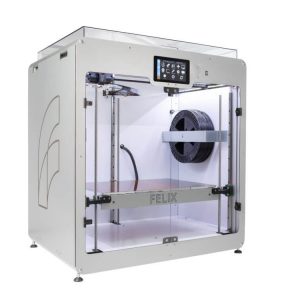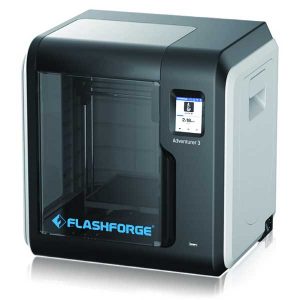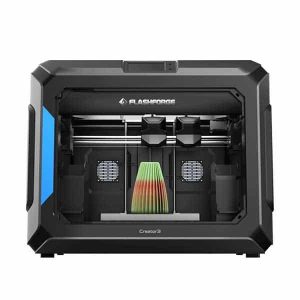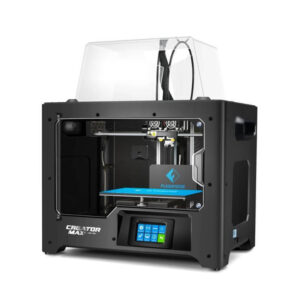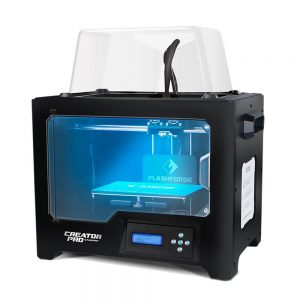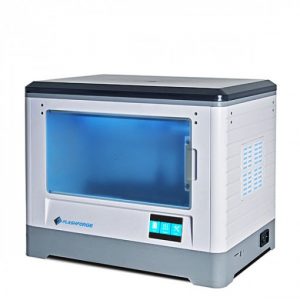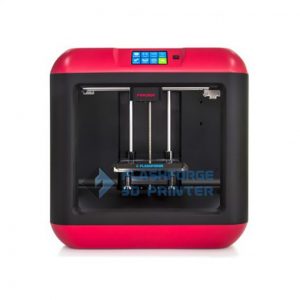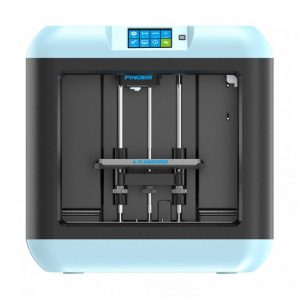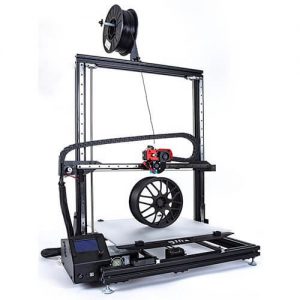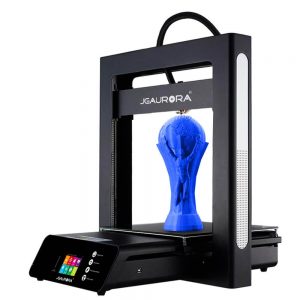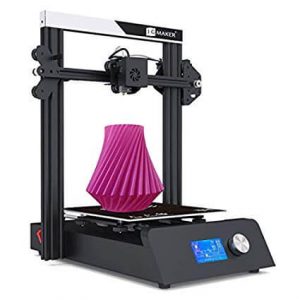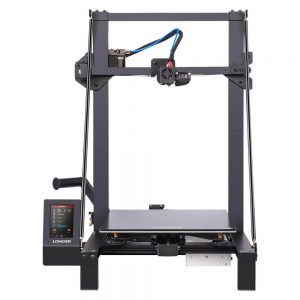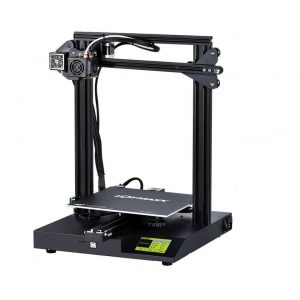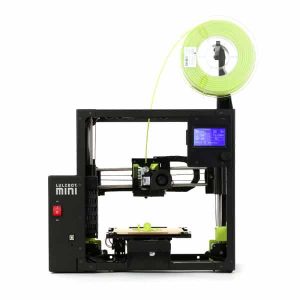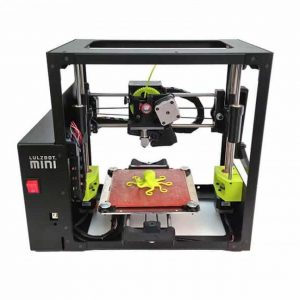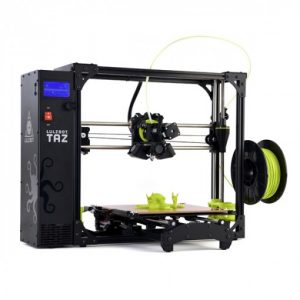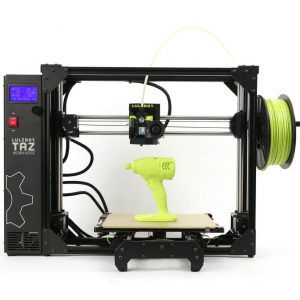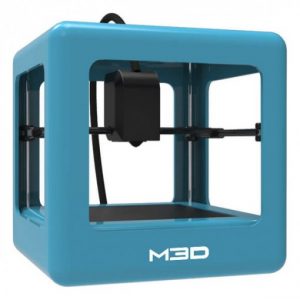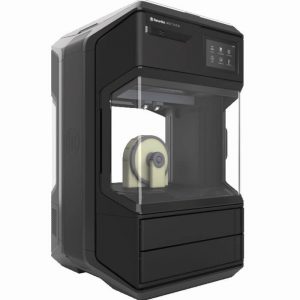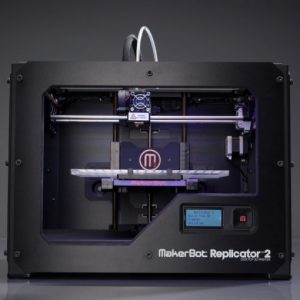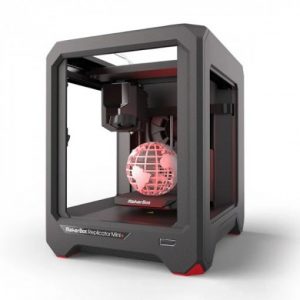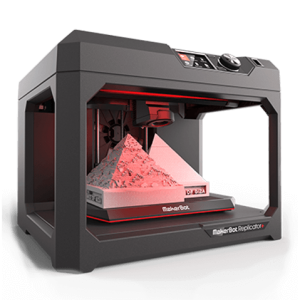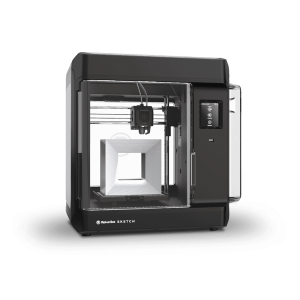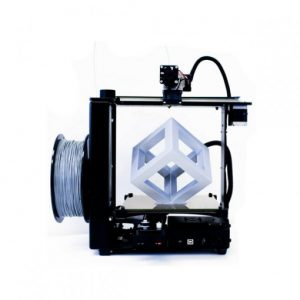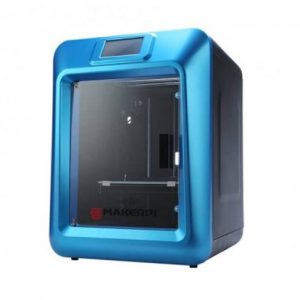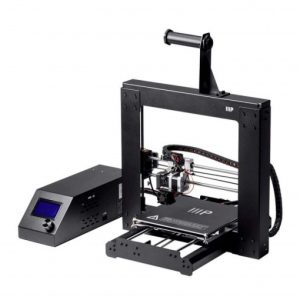Filter
Showing 31–60 of 109 results
PROS:
- Huge Build volume.
- Removable and bendable flexplate.
- Dual extrusion system.
- High-quality surface finish.
- Dimensional accuracy even in intricate parts and functional prototypes.
CONS:
- Enclosed print chamber.
- Post-processing of part is difficult because cooling takes more time than in any open-body 3D printer.
PROS:
- Optional dual extruders.
- Flexible build plates.
- Semi-automatic leveling.
- Heated bed.
CONS:
- Open body.
PROS:
- Third-party filaments are supported in the printer
- The printer has a user-friendly touchscreen display
- There’s a filament runout sensor in Adventurer 3 that’s coupled with a resume print feature that allows parts to resume printing exactly from the same point from which they were left off after changing filaments
- Multiple connectivity options in Adventurer 3 include USB, Wi-Fi, ethernet, and cloud printing
CONS:
- The build plate can move around too much and sometimes cause the part to fail so it has to be calibrated before printing which takes a lot of time every time!
- The instruction manual that comes with this printer can be confusing to get through
- The Wi-Fi connection is known to present some issues while updating the software
PROS:
- Independent dual extrusion system.
- Built-in camera.
- Can be monitored from anywhere.
CONS:
- Compact in size, small build volume.
- Enclosed body.
PROS:
- Dual extrusion.
- Considerable build volume.
- Easy to set up.
- Decent print speeds.
CONS:
- Printing support materials is a little confusing.
- It’s difficult to deal with the SD card slot and there are complaints about the way it functions.
PROS:
- Pre-Assembled
- Decent Print Quality
- Dual Extruder
- Affordable
- Heated Bed
CONS:
- No Auto Calibration
- A Bit Noisy
PROS:
- Easy to assemble.
- Dual extrusion.
- Considerable build volume.
- Extraordinary speed.
- Good resolution in prints.
CONS:
- The enclosed chamber restricts the user’s freedom.
- Filament jamming is reported as a problem by many users.
- Printing with ABS is a little bit problematic.
PROS:
- Removable build plate
- Quiet operation
- Simple and impressive design
- User-friendly touchscreen interface
- Very Reliable
- Overhead light for enhancing the visibility of prints
CONS:
- Tiny build space
- Non-heated print bed
- Lack of auto-leveling feature
- Only supports PLA
- Tricky when working with support structures
PROS:
- Easy to setup
- Assembled and compact
- Removable Bed
- Assisted bed leveling
- Affordable
CONS:
- No automated calibration
- Only prints with PLA
- Not suitable for professionals or serious users
PROS:
- Extensive filament options.
- Genuine E3D All metal hotend.
- Massive build volume.
- Industrial Strength Frame.
- Integrated heated bed and BuildTak.
CONS:
- Temperature generation might be an issue due to the open frame structure of the printer.
PROS:
- Easy to setup
- The operation is also easy making it a convenient choice for beginners too
- It can engrave on a huge choice of materials, hence, highly versatile
- It is safe to use and comes with a fully enclosed frame
CONS:
- It does have a bulky design
- The printer won’t work without a WIFI connection at all
- It is noisy and produces smell as well
Editor choice
PROS:
- The printer is very compact and easy to manage.
- Accurate and reliable.
- Pre-assembled.
- Provides automatic bed leveling
- Factory calibrated
- It uses the 60W UV LED to process the prints faster.
- The print quality is awesome.
- Offers wired as well as a wireless connection for uploading the 3D models.
- You also get to enjoy the hassle-free smartphone remote control.
CONS:
- The consumable cost is higher. And, this includes the FEP film that wears off with time and regular use. You do get a replacement but aren’t always in the perfect size. You will need to employ extra efforts in cutting the film to the required size.
- Build space is too low.
PROS:
- Full metal construction
- Full-color LCD touchscreen
- Filament run-out sensor
- Easy to assemble
- USB stick
- Power off recovery
CONS:
- Produces lots of noise while printing
- Hard to work on
PROS:
- Highly affordable
- Easy to setup
- Multiple filament support
- Heated print bed
- Print resume option (both for a power outage or accidental removal of SD card)
- Acceptable print quality with smoother surface finish
CONS:
- May not suit professionals with much complex print requirements
- No auto bed leveling
- Upgrades are difficult
- Not a plug and play machine
PROS:
- 4.3 inch touch screen interface to ease out the interaction.
- Auxiliary leveling and humanized design.
- High-quality lattice glass easing bed adhesion.
- Top-quality blue Teflon tube resisting high temperatures.
- TMC ultra-quiet drive for silent, noise-proof operations.
CONS:
- Not only LK5 Pro but in general every open-bodied 3D printer has the problem of generating temperature as opposed to printers that host a print chamber.
- Setup is an issue if you are not used to many manual adjustments.
PROS:
- Supports filament break detection, resume printing after power loss and a stopped print and also supports online or TF card offline printing.
- 3.5-inch Touch LCD Screen.
- Support 7 languages - Chinese, English, German, Russian, Spanish, French, Italian.
- Integrated metal body design.
- Mute printing.
CONS:
- Open body of the 3D printer makes it hard for you to achieve the glass transition temperature of the filament material.
- Part quality is average.
PROS:
- The 3D printer is very reliable with a sturdy design
- The compact design is impressive
- Plug and play setup
- Automatic bed leveling
- Compatible with a large type of materials
- User-friendly user interface
- It offers a 20 percent larger build volume than its predecessor
- High print speed
CONS:
- Print quality with high speed isn’t very impressive
- Small build volume
PROS:
- PEI print surface
- Beginner’s friendly
- Sturdy Design
- Automatic calibration
- Auto-cleaning of nozzle
- Comprehensive documentation
- Reliable
- Open-source hardware, hence expandable
CONS:
- Missing LCD control
- Very Small build volume
- Requires a connection to the PC for operation
- Noisy
PROS:
- Lulzbot TAZ 6 has a huge build size i.e. (280 x 280 x 250 mm).
- The printer is reliable and gives consistent printing performance.
- The frame of the printer is solid, also it has a sturdy design.
- Lulzbot TAZ 6 is easy to use and setup.
- You can auto-calibrate this printer and self-clean the nozzle.
- The printer is open-sourced and hackable.
- You can do untethered printing on the PEI print surface.
CONS:
- The printer is priced much higher than others offering the same amount of features.
- Lulzbot TAZ 6 is slightly noisy.
- Has a limited user control when operated in untethered mode.
- You’d have to take a slow initial setting up the printer because of slicer issues.
PROS:
- High speed
- High accuracy when printing
- Automatic bed leveling
- Automatic nozzle cleaning
- E3D extruder
- Heated Build surface
- PEI coated surface
- Swappable tool heads
CONS:
- Lack of Wifi Connectivity
- Expensive for home users
- No remote access
PROS:
- The printer provides highly accurate results
- It is the best choice for smaller projects
- The printer is highly affordable for beginners as well as schools
- It flaunts easy operation
- Noiseless printer
CONS:
- Not suitable for large projects
- Speed isn’t very impressive when printing at a higher resolution
- Lack of onboard memory is present
PROS:
- Automatic Z Calibration.
- Automatic Nozzle Calibration.
- Automatic Material Loading.
- Much of the printing system is completely automated thereby decreasing the overall inefficiency associated with the printer.
- The printer is also well integrated with the CAD software meaning that all the flaws in the design can already previously be viewed and disposed of at the correct moment.
CONS:
- The printer has a closed chamber which would mean that manual cooling would be needed after the part is printed. This would in turn lead to an increase in overall print time needed for an object.
PROS:
- Professional interface.
- Good PLA filament.
- Excellent software.
- Active user community.
- Plug and Play.
CONS:
- Clogged print heads.
- Acrylic build plate.
PROS:
- Smart extruder plus
- Compact
- Easy to set up (in just 10 minutes)
- Auto calibration
- Auto bed leveling
- Reliable
- Great customer support
- Removable build plate
CONS:
- No dual extruder
- Compatible only with PLA
- Does not support high temperature
- 100 microns precision
Best price
PROS:
- Sleek and can be used inside your house as well
- It is easy to set up with the help of instructions available on the mobile app
- WiFi connectivity available
- Remote monitoring is possible on mobile phones and tablets
- Nice print speed
- Larger build volume in comparison to its predecessor
CONS:
- Print Quality isn’t justified when put across the price tag the printer owns
- The USB port has connection issues
- Non-heated build plate causes warping
- Third-Party filament usage limitation
- Open Design and risky to use around kids and beginners
Best price
PROS:
- You can maximize student innovation using this 3D printer setup. It gives you the facility as a teacher to combine hybrid classroom teaching with hands-on learning and unlock students’ creative potential with accessible printing merged with project-based learning.
- You can develop professionally, and gain confidence by following the fifteen hours of student curriculum with Design thinking and 3D printing. It provides you ISTE certification not only if you are a teacher, but also if you are a student. There is 3D printing integrated curriculum available for teachers that are applicable with PD credit.
- The printer allows you to have a 3D printing collaboration from anywhere. You do not necessarily need to be around the 3D printer. The free cloud-based software with Makerbot Cloud print can be integrated with Google classroom. It will allow you to design print integrations across familiar software such as Tinkercad, Fusion 360, and Onshape.
- By buying it, you avail the opportunity to join the largest 3D printing community of educators. Allow yourself to learn from curated lessons that are created by Makerbot Certified Educators and access more than 600 lesson plans across various grade levels and subjects.
CONS:
- Makerbot Sketch Classroom needs active participation from your end. Whether you are a student or a teacher, you will have to also search for new ways to work out with this 3D printer. Also, after a point of time, you’d realize that the printer will not be effective enough to print intricately designed parts and functional prototypes on it. It can provide a basis for those who do not know 3D printing at all. But if you are a user who is above it, this 3D printer is definitely not for you.
PROS:
- High reliability
- Amazing print quality
- Great speed
- Multiple material support
- Metal frame for the sturdy body and better precision
- Heated build plate
- Advanced cooling of parts
- True leveling;12 months warranty
CONS:
- Expensive for home users
- Connectivity sometimes is not very smooth
PROS:
- Easy to setup
- True leveling
- Independent dual extruder
- Great print quality
- Higher reliability
- Professional print results
- The heated and removable print bed
- High nozzle temperature of up to 300 degrees Celsius
- Mimeo Mode
CONS:
- Expensive for home users and makers
Editor choice
PROS:
- Greater build volume.
- Excellent Quality of prints.
- Touch screen interface.
- Integrated Camera.
CONS:
- Unstable while printing.
PROS:
- Monoprice Maker Select V2 is affordable.
- The print quality is average.
- This printer offers a large build area.
- Has a support team that is ready to help anytime i.e. before or after purchasing the printer.
CONS:
- Support structures used with this printer could be better than what they are.
- Setting the printer up requires a little more time than with other printers

